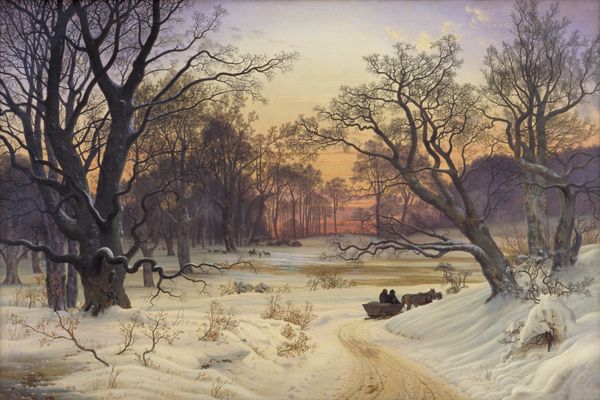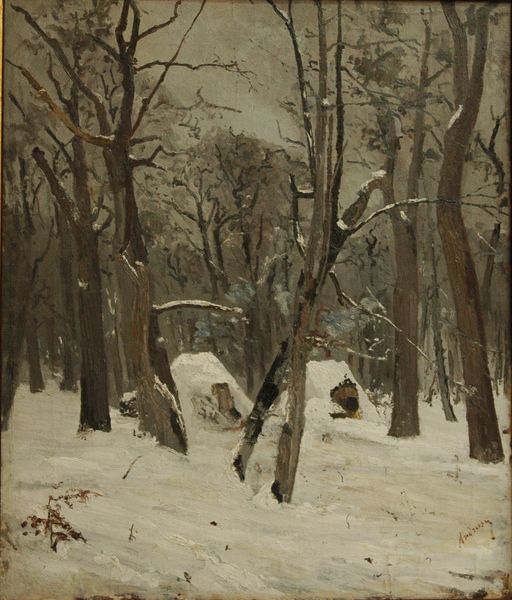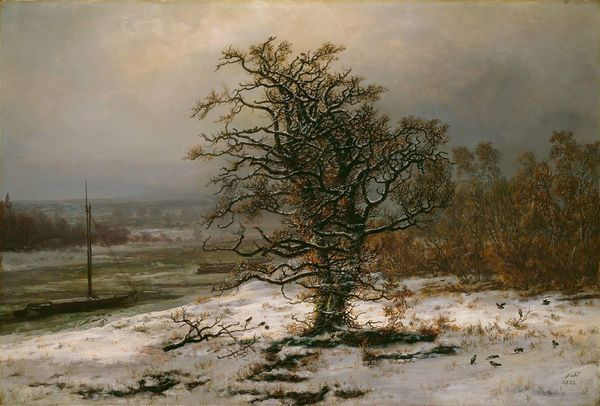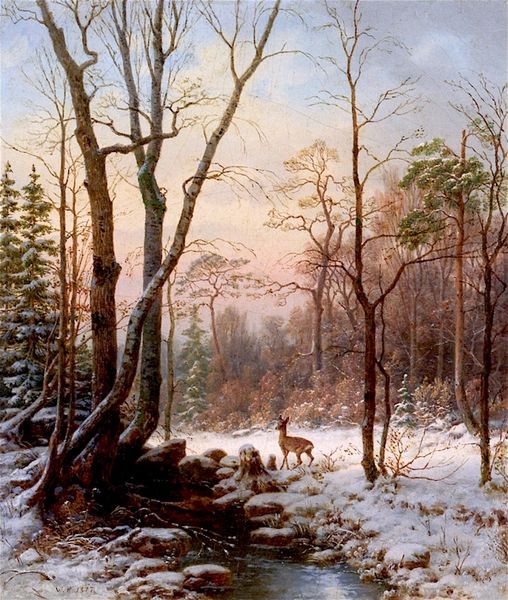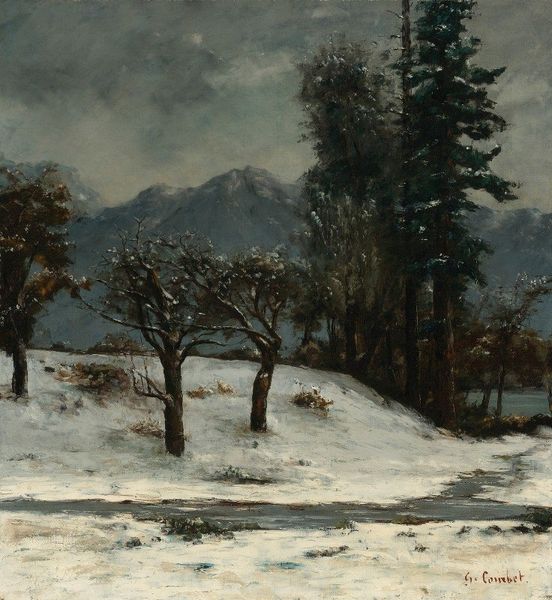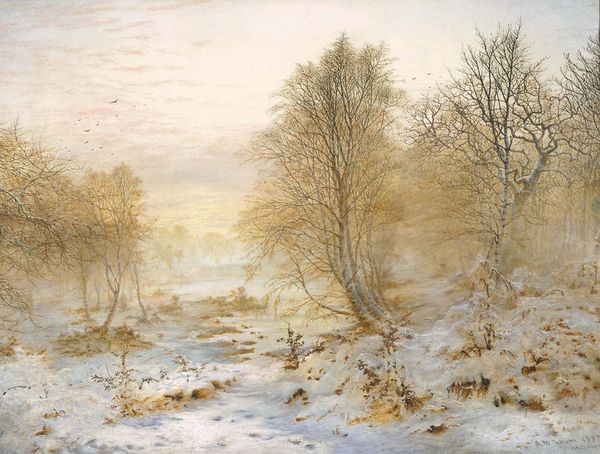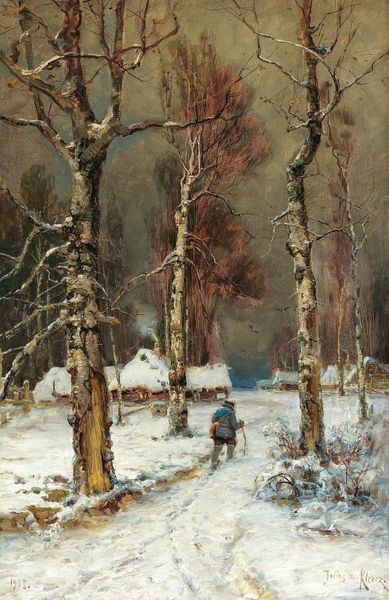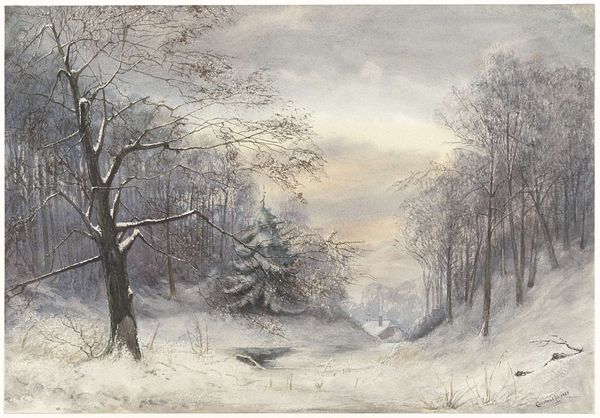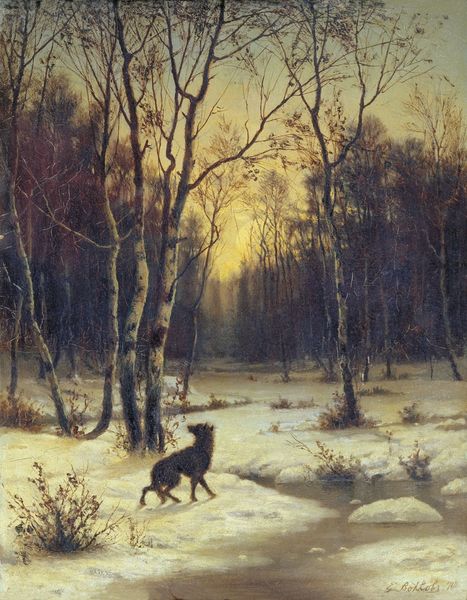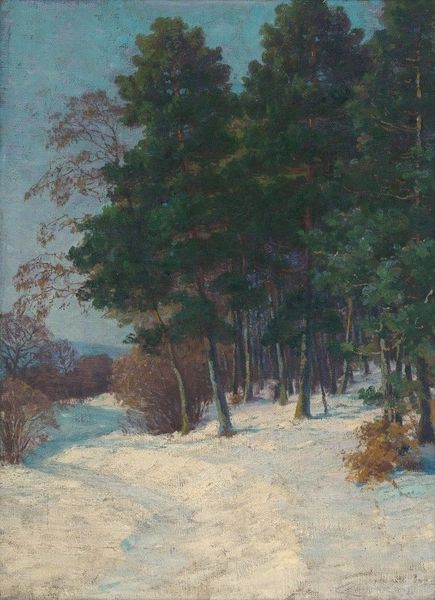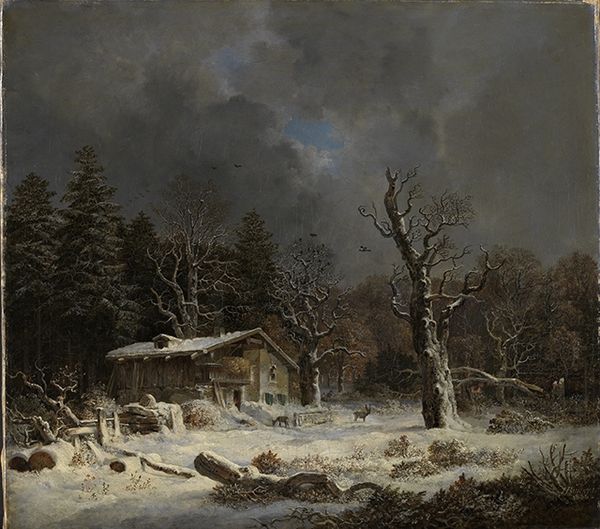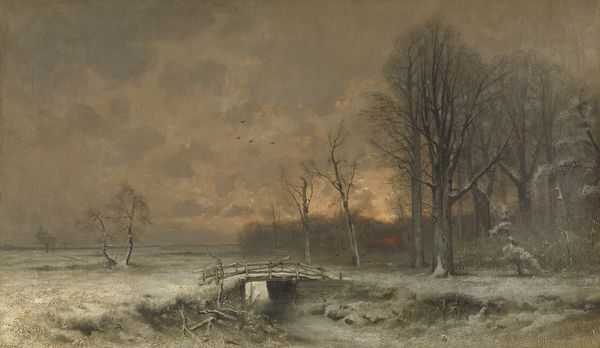
tempera, plein-air, oil-paint
#
tree
#
sky
#
tempera
#
plein-air
#
oil-paint
#
landscape
#
figuration
#
oil painting
#
derelict
#
plant
#
romanticism
#
cityscape
#
history-painting
#
sublime
#
realism
Dimensions: 80 x 62 cm
Copyright: Public domain
Editor: So, this is Caspar David Friedrich's "Dolmen in Snow," painted in 1807. It’s an oil painting. What strikes me immediately is its quiet desolation—a sense of past grandeur almost swallowed by time and weather. How do you interpret this work? Curator: It’s crucial to understand Friedrich within the context of burgeoning German nationalism. This wasn't just landscape painting; it was a deliberate construction of German identity, rooted in its pre-Christian, pagan past. These dolmens – these stone structures – represented ancient power, specifically a Germanic heritage that predated and challenged Christian dominance. How does the stark winter setting speak to you in terms of power? Editor: I suppose the winter intensifies that sense of desolation but also of resilience. Things survive, however changed. Curator: Precisely. And think about the placement of the dolmen. It’s not celebrated; it’s nestled, almost hidden, amongst these towering, skeletal trees. What’s Friedrich saying about the relationship between this ancient heritage and the natural world? Consider that Romanticism—of which Friedrich was at the forefront—positioned nature as sublime, a space where humanity could connect with the divine, outside of institutionalised religion. Editor: It sounds like a direct challenge to the established order. So nature and ancient history become almost weapons against the status quo. Curator: Exactly. The painting is, therefore, deeply political. It uses visual language to construct a particular narrative about German identity, rejecting contemporary power structures by glorifying a mythologized, pagan past intertwined with nature. Are you aware of the ways these same images may be deployed by far-right nationalist movements today? Editor: That's unsettling to think about but necessary. I see how easily these kinds of symbols could be twisted. Thank you, this was very eye-opening. Curator: My pleasure. Examining how historical narratives can be manipulated in the present is vital to how we engage with art history.
Comments
No comments
Be the first to comment and join the conversation on the ultimate creative platform.
